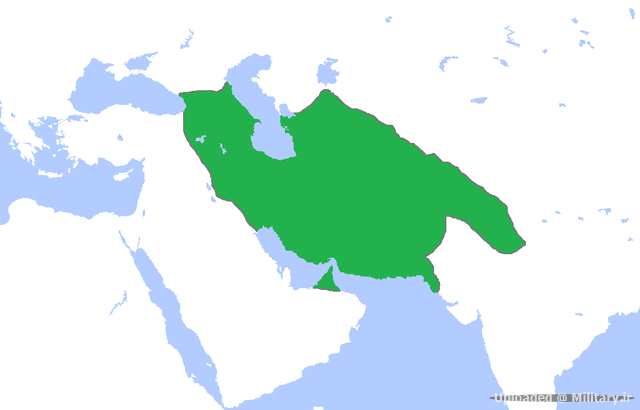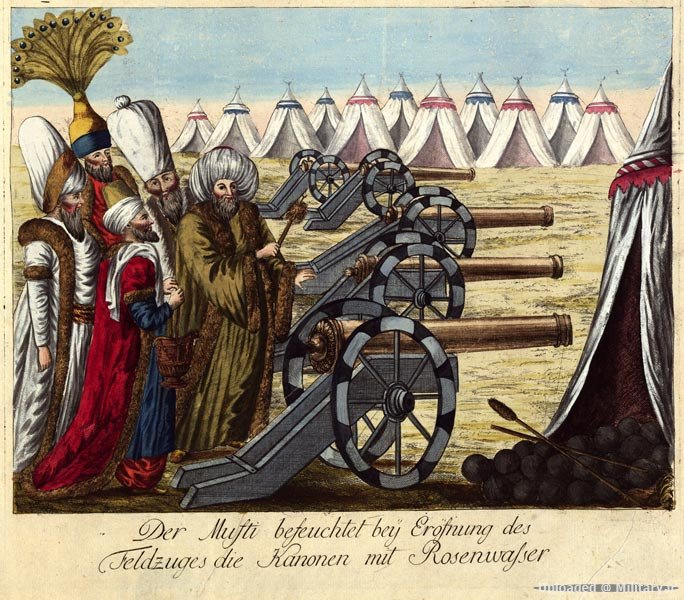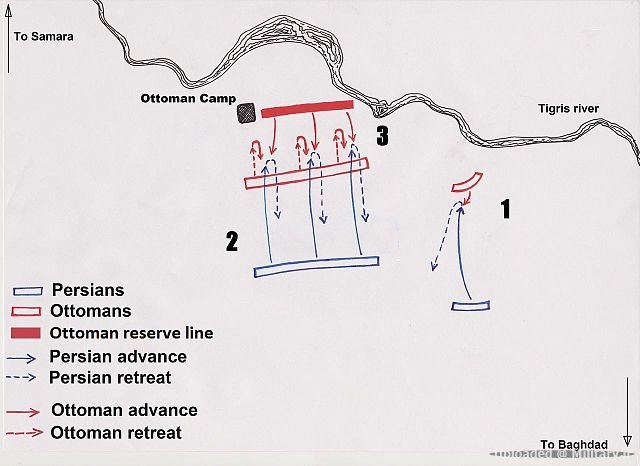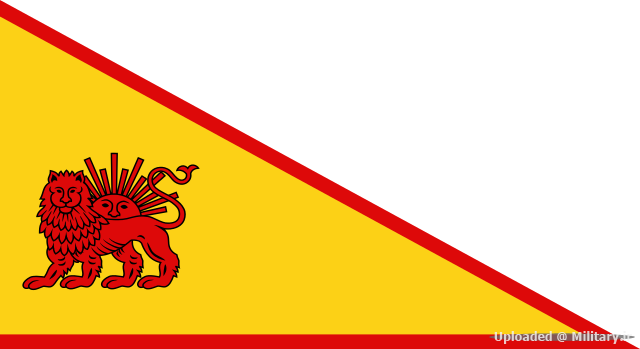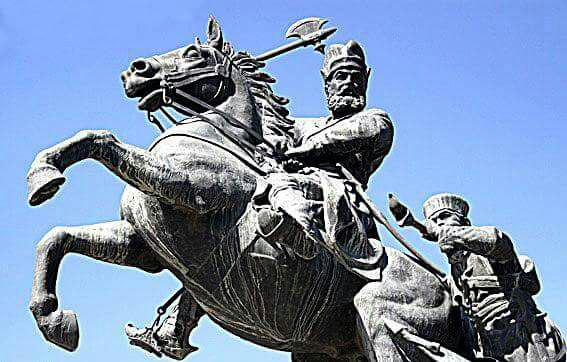The Battle of Samarra was the only defeat of Nader Shah Afshar
The Battle of Samarra was a key conflict between two great Iranian and Ottoman generals, Nader Afshari and Topal Osman Pasha, which led to the abandonment of the siege of Baghdad by Nader's troops and the survival of the power of the High Council of Istanbul in Iraq. . The bloody battle of Samarra led to the complete destruction of the Iranian forces with a loss of 50,000 people and severely weakened the strength of the victorious Ottoman side. .
In addition to the decisive impact of this battle for the city of Baghdad, it was the only major defeat on the battlefield . Later, Nader took his revenge on the Ottoman general for the humiliation in Samarra in the battle of Aq-Darband, where Topal Osman was defeated and killed. .
The realm of Afshari rule at the height of its power
The siege of Baghdad and the entry of Topal Osman Pasha into the scene
Nader had already surrounded Baghdad with a strong force of 100,000 people . By building towers and digging numerous moats around Baghdad, Nader enclosed it in an iron ring, which made Ahmad Pasha, the ruler of Baghdad, think of surrendering the city. . But at the beginning of the negotiations, Ahmed Pasha was informed that the most prominent imperial commander and former minister, Topal Osman Pasha, along with an army of 80,000 people, including trained infantry and cavalry. ( The troops were Ottoman heavy cavalry ) And 80 cannons are going to save Baghdad from the north .
Topal Osman was different from all previous enemies that Nader had faced . Victory in previous battles had given Nader a sense of invincibility . Nader left 12,000 of his forces to keep the siege of Baghdad, and with 70,000 soldiers and dozens of cannons, he marched towards Samarra in the north. .
Intensification of the siege of Baghdad
To put pressure on the ruler and residents of Baghdad, Nader diverted the rivers passing through Baghdad . A cruel thing that did not cause the city to surrender despite the death of 60,000 residents .
The artillery of the Nader army, which consisted mostly of cannons for field battles, failed to destroy the fortifications of Baghdad . Iranians were not yet equipped with siege artillery . The only rare hope was the surrender of the city due to the pressure of hunger, but the ruler of Baghdad knew that the fall of the city of Baghdad would mean the fall of the entire province of Baghdad and perhaps even Arab Iraq, and it would cost him a very heavy price. .
Topal Osman, the old fox
Topal Osman was of Anatolian origin, but in the Peloponnese peninsula ( Moriah ) He was born and raised in Greece . In his youth, he served the Sultan's government . While leaving for Egypt, the ship carrying Topal Osman was attacked by the sailors of the island of Malta . Topal Osman was taken to Malta and later released in front of Prakhet Fadiyeh . Participating in the Rukhaneh Proth operation in which Peter the Great, the Tsar of Russia, was defeated, and his brilliance in the war with the Republic of Venice made Topal Osman attain the position of Beglarbegi and Pasha of the Empire at the age of 24. .
Topal eventually rose to the position of Prime Minister of the Empire, although political strife in the capital meant that he remained in the post for only six months. . By appointment to the position ( Saraskar ) Empire, 70-year-old Topal Osman, who was in charge of Tbilisi and Trabuzan states at this time, was called to face Nader. .
Topal Osman was the most prominent and strongest opponent of Nader in the wars, whose courage and experience were equal to Nader . Perhaps Nader was destined to find out that no man is invincible .
Painting of Ottoman gunners
Cool Samarra
Topal showed his ability at the very beginning . The Talaiye Corps and the guards of the rear part of the Topal Corps, under his command, when they were in the sight of rare observers, they advanced irregularly and pretended to be weak, but at night they assumed a real and reinforced formation. . Nader sent a large part of his cavalry to attack the left flank of the Ottoman forces, but the Ottoman forces, which were more numerous than Nader had thought based on the reports, pushed them back using artillery. .
Nader's next decision was to defeat the Ottomans in a head-on attack with the participation of 50,000 of his soldiers . With this intense attack, the center of the Ottoman army was forced to retreat to the vicinity of its camp, and some of their cannons fell into the hands of Nader forces. . At this moment, the escape of 2,000 Kurdish soldiers exposed Topal Osman's Ottoman army to complete defeat . But the arrival of 20,000 reserve forces under his command pushed the Iranians back and recaptured the cannons .
The battle continued with successive ups and downs for both sides until noon . Topal Osman's intelligence in taking a position caused the Ottoman forces to have no problem accessing the water of the Tigris River which was behind them, while the Iranians suffered from thirst and erosion due to the continuation of the battle and the strong sunlight between the rivers, which to quench that source It was not suitable . Topal Osman's stance had another advantage : The direction of the wind was rare towards the army and the resulting dust obstructed the vision of the Iranians . Finally, the betrayal of one of Nader's allied Arab tribes in the decisive moments of the battle caused even Nader's war-tested forces to be caught in a dire situation. .
Arrival of 12,000 powerful Pashtun Abdali cavalry ( Ahmad Shah Durrani, the great leader and leader of Durrani, was from this tribe ) which Nader supported in difficult moments, could not break the strong ranks of the Ottoman soldiers and only added to the chaos and bloodbath that the battle of Samarra had turned into. .
Nader personally entered the battlefield in order to give morale to his troops, who were under more and more intense pressure, and killed one of the Ottoman horsemen with a spear, but he himself fell from his horse in the battle. . The spread of the rumor of Nader's death among the tired Iranian troops completed the collapse of Nader's army . After 9 hours of fierce fighting, the organized resistance of the Iranians broke down and turned into a disorderly retreat to the south . Nader had been defeated in a field battle for the first and last time . The two generals led their armies with indescribable strength, but Topal Osman managed to win a decisive and glorious victory despite suffering terrible losses. .
Cool Samarra :
1- Nader was unable to defeat the Ottoman left wing due to the secret arrival of Ottoman auxiliary forces the night before
۲- Enraged by his initial defeat, Nader organizes an all-out attack that pushes the Ottomans back close to their camp. .
۳- Topal Osman's reserve forces of 20,000 men turn the situation in his favor . The continuation of the battle leads to the destruction of the morale of the Iranians and the decisive victory of the Ottomans, but with many casualties .
Result
Half of Nader's soldiers were lost in this battle and almost all the artillery fell into the hands of the Ottomans . 30,000 people were killed and wounded and 3,500 people were captured, of which 500 were immediately executed . The Ottomans also lost a quarter of their soldiers in this deadly battle . However, this costly victory saved Baghdad and Ahmad Pasha : The defenders of Baghdad, who had received the news of Topal Othman's victory, gained a double spirit by opening the gates and defeated the besiegers and forced them to flee. . On July 24, 1733, Topal Osman and his soldiers entered Baghdad in a triumphant parade
Afshari dynasty flag
Statue of Nader Shah in Naderi Museum
Iran-Ottoman War
(۱۷۳۰-۱۷۳۵)
Part of the rare wars
time of occurrence :July 19, 1733
place of occurrence : Iraq, near Samarra
Result : Decisive victory of the Ottomans
Changes in territory : Iraq remained under the rule of the Ottomans
The parties involved :
Safavid Empire
The Ottoman Empire
Commanders and leaders :
Iran : scarce
Ottoman : Topal Osman Pasha
combat power :
Iran : 70 thousand soldiers, several tens of cannons
Ottoman : 80 thousand soldiers, 60 cannons
Casualties and damages :
Iran: 30 thousand people, 3 thousand prisoners, 500 people were executed, all cannons and bees
Ottoman : 20 thousand people
Source : Wikipedia site # and military.ir #


